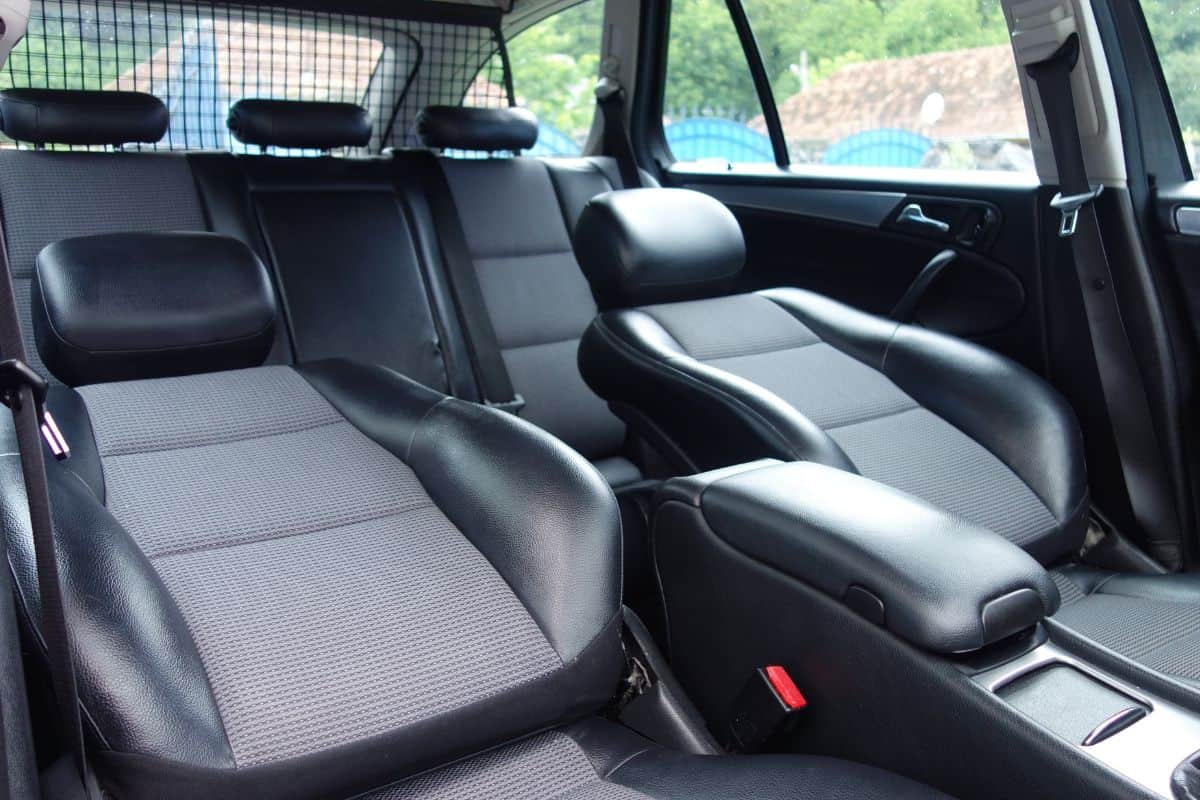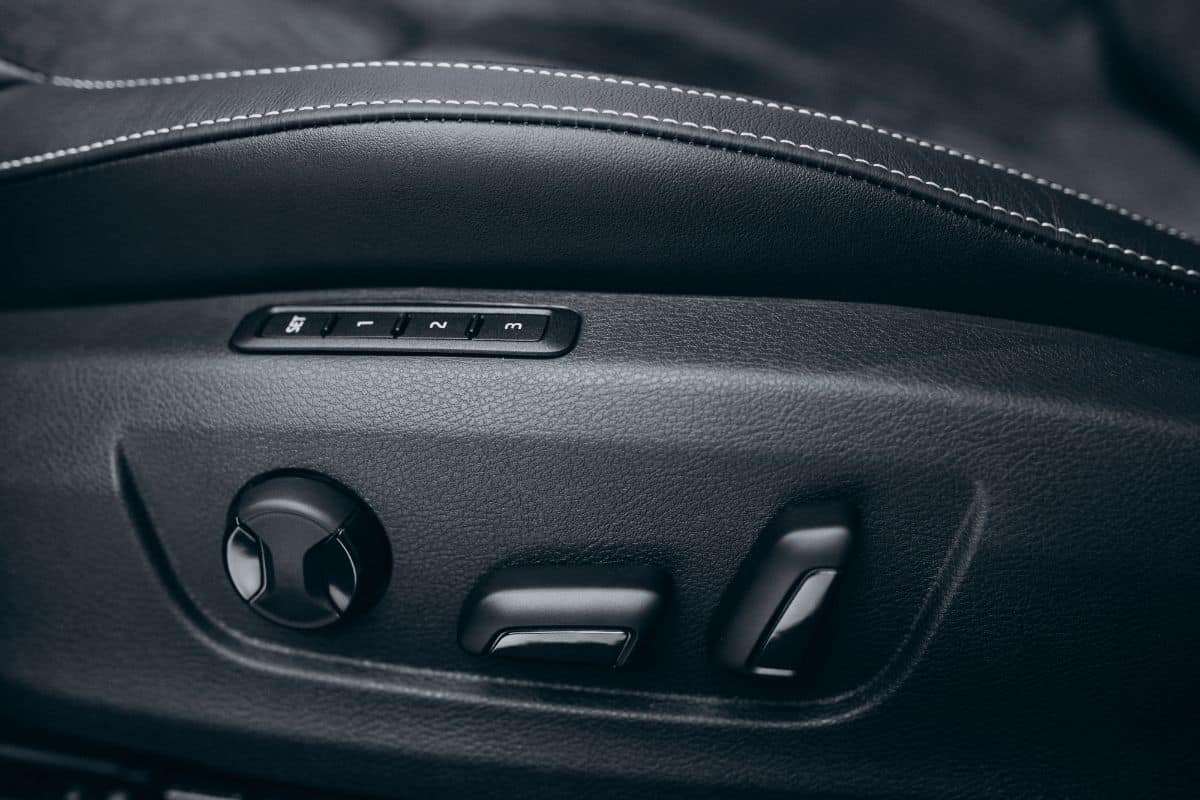Have you ever noticed that your car seat won’t lock in place? Or does it seems to slide and tilt back and forth as you move around? Let’s look at a few potential reasons for this issue, as well as the solutions.
If your car seat won’t lock in place, you will need to remove and disassemble the seat to examine the locking mechanism for damage. The most common reasons why a car seat won't lock into place are a faulty slide adjustment lever and/or a faulty backseat spring mechanism.
If it's not physical damage, then it's most likely corrosion. Depending on the cause and severity of the problem, you may need to replace the faulty part or just lubricate it.
There are a lot of different factors that could be the cause of this issue. We will explain all the possible causes in the succeeding sections so that you can figure out which one fits your situation. Keep reading for more information.
![The seats of a Mazda 3 sedan. - My Car Seat Will Not Lock In Place [Inc. Forward, Back, Tilt & More] - What To Do?](https://vehq.com/wp-content/uploads/2022/12/The-seats-of-a-Mazda-3-sedan.-My-Car-Seat-Will-Not-Lock-In-Place-Inc.-Forward-Back-Tilt-amp-More-What-To-.png)
Common Causes Why a Car Seat Won't Lock Into Place
If your car seat won't lock into place, you could have a problem with the car seat's locking mechanism. There are many different factors that can cause your seat to fail to lock, and we will discuss each of them in detail below.
1. Faulty slide adjustment lever
The slide adjustment lever is used to move the seat forward and backward. The seat has a locking mechanism that keeps the seat firmly in place when the lever is in the locked position.

When the slide adjustment lever is depressed, causing the metal tabs to disengage from the holes in the track underneath the seat.
This allows the seat to slide on the runners freely until you release the lever. The lever should bounce back to its original position upon release. The slide adjustment lever should show resistance as you adjust the seat's sweet spot.
If it doesn't, then something must have caused the resistance to weaken. If this happens, the seat is left in an unlocked position. This will result in the seat moving with the car back and forth like you're on a boat.
If the lever is stuck and won’t budge, then you should check if the metal tabs are damaged or corroded. You can spray some WD-40 on all moving parts that are involved in the locking mechanism to loosen the rust.
2. Broken backseat spring mechanism
The backseat adjustment mechanism is designed in such a way that the back of a car's seat moves only when the adjustment lever is pulled. The lever is connected to a radial spring and will move freely while showing resistance once the lever is pulled.
There is a gear inside the adjustment and locking mechanism that fits into a catch or a groove on the stabilizer plate, which is part of the adjustment lever. When the lever is being pulled, the gear disengages from the grooves and puts the backseat in an open position.
This allows you to adjust the backseat in the car. To lock the backseat in place, the adjustment lever has to be released. The gear engages with the groove again and locks the backseat in its adjusted position.
The adjustment lever should resist the pull being applied and make every effort to go back to its original position when released because of its spring-loaded mechanism.
If it doesn't, then it will be stuck in an open position with the gear not engaging with the grooves. This causes the backseat to move freely and not lock into place.
The solution to this is no different than a faulty slide adjustment lever. Check for signs of physical damage and corrosion in the spring mechanism and deal with your findings. You may have to replace the spring or temporarily fix the issue by de-rusting and lubricating it with WD-40.
How Much Will It Cost To Repair My Car Seat?
The cost of repairing a car seat is based on the variety and extent of the damage. A car seat that is completely torn apart will cost you more to repair than a car seat that is damaged only around the edges.
For instance, if the car seat has a cracked adjuster rod or broken side frame, then you cannot expect it to cost less than if you had a simple adjustment issue.
You can expect to be billed anywhere between $70 to $350 for minor adjustments and repairs. This already includes parts and labor costs.
Upholstery fixing and replacing can be very costly and can cost you up to $350 for a simple seam fixing. Reupholstering costs can go as much as $700.
How Can I Tell If My Seat Switch is Going Bad?
If you’ve been having a hard time trying to figure out why your car's seat switch feels like working fine and then stops working all of the sudden, then there are three simple ways you can tell if the seat switch is going bad.
First, you can check if it's actually broken. You can examine the switch for the presence of cracks. If there is a crack, then you might have something that's getting in the way of the switch, like a small piece of dirt or debris.
Cracks also invite moisture in and over time, this could cause to disrupt the electrical connection between the seat switch and its wirings.
Another possibility is that the seat switch has just worn out over time. In this case, the switch should still work, but you might notice that it is becoming less responsive as you press the button.
A blown fuse is another possibility. Fuses are usually located somewhere in the dashboard, under the hood, or underneath your rear seat. They're usually color-coded so you need to check your car's manual which fuse corresponds to the seat switch.

How To Move Power Seat Without Power
In a few cases, the power seat of a car can break or become stuck. This is an inconvenient situation as you cannot move the seat forward or backward.
When this happens, there is a way to move the seat manually. However, this is just a temporary solution. Here are the steps:
1. The first step is to remove the seat switch housing. Locate the screws that hold the seat switch housing in place and unscrew them.
2. Once you have the screws removed, try to manually rock the switch back and forth and observe if the rod that's supposed to engage with the rail moves as well.
3. Fit a winder tool into the rod's socket and rotate it to the right. You can also use a drill bit and a ratchet. A loud bump should alert you to stop rotating as this signifies that the rod and the rails have already engaged.
You should be able to move your power seat back and forth with no problems after this. Put everything back together and you're done.
Check out this universal socket wrench adapter and drill bit set on Amazon.
How Much To Replace a Car Power Seat Motor?
Replacing the power seat motor is one of the more affordable car repairs out there. This is because the wear and tear are caused by how frequently you use the motor, so it only needs to be replaced when you have to.
If you're the only one driving the car, then you should not be constantly adjusting the seat's position for different people.
Generally, you can expect to pay between $50 to $350 for an aftermarket seat motor. As usual, prices may differ and are dependent on the brand.
Alternatively, you can buy a used seat motor from a salvage yard for about a cheap price. When choosing a used motor, you need to make sure that the part fits your model of vehicle.
Labor costs can be anywhere from $100 to $150, depending on where you take the job. You can save money by doing it yourself if you have the proper tools and knowledge.

How To Replace Car Power Seat Motor
Replacing a power seat motor is a very simple procedure. You just need to know where the various parts are located and how each part connects to the others.
Tools needed:
- A replacement power seat motor
- Socket wrench or ratchet
- A flathead screwdriver
- A Phillips screwdriver
Before you start, always refer to your car's manual for the correct wiring harness diagram for your power motor as it may vary from vehicle to vehicle.
9 Steps to Follow When Replacing a Car Power Seat Motor
1. Disconnect the negative battery cable.
2. Remove the bolts and screws that hold the power seat in place and remove the seat trim panel. To do this, you can pry the edges with a flathead screwdriver until they give way.
3. Take off the power seat switch. Lift and remove the power seat.
4. Locate the harness that runs from the power seat motor, then disconnect all exposed wires out of their harness. Take note of how the wires fit together and what color they are so you can easily remember which wires go where when reassembling.
5. Remove the power seat motor and install the replacement motor.
6. Once you have the replacement motor installed, put the seat back on, the power seat switch, and connect the wires back to the harness.
7. Put the trim seat panel back on and make sure the edges snap in place.
8. Put the screws back on and tighten them along with the bolts on the power seat. You need to tighten all the screws or bolts to the appropriate torque.
9. Reconnect the negative battery cable. Test if the new power seat motor is working by adjusting the seat according to your preference.
Check out this screwdriver set on Amazon.
In Closing
Before assuming a faulty car seat locking mechanism, always consider rust as a possible cause. While a little bit of rust is not dangerous, however, severe rust in a critical area can eventually cause the locking mechanism to fail.
You might also like:



